USER REPORT: The Nikon Df
by Benjamin Schaefer – His blog is HERE
Almost a year ago, I sold much of Nikon gear, including my D800 and many of my zoom lenses to busier – and better – photographers who would give them more than a “shelf life”. Since our son was born in December 2012, I had lacked the time to continue the few gigs I was shooting, this never having been a full-time occupation. In the past few months I have been shooting my Olympus OM-D E-M5, and more recently an E-M1, which covered 90% of what I do and are compact enough to be brought along almost anywhere. For full frames, I used a Leica M9, with its excellent optics. However I could not quite divest myself completely from Nikon, and so I kept not only a UV-IR modified (and pretty much unsellable) Nikon D7000, but also a few of my favorite Nikkor primes, as well as a 17-35mm AF-S, the latter to be used with the D7000 (and I do not shoot a lot of IR). To be honest, the D800 was probably too much camera and a bit of a headache – it went back to Nikon twice for focus adjustments and the massive files were clogging up my iMac.
As it turns out, however, I missed my Nikon FX. I was looking over a few images I shot with the D800 in the past 1.5 years and started reminiscing of the creamy quality of my favorite portrait lenses, the 85 mm f1.4 and 105 f2.5… I can use them on the D7000, but only with a IR-UV cut filter (which isn’t perfect) and giving me less flexibility in terms of depth of field.
When Nikon announced the Df (Digital fusion, which I think is a misnomer I think F-D, as in digital F, would have been more fitting), I was intrigued, but first skeptical at first. With the OM-D and the M9, you know I am a retro-style, shoot in Manual, dedicated control wheel kind of guy (OK, I admit I shoot a lot in Aperture priority, too, but I never had much use for Program mode and “Custom” settings).
If you are reading this you probably know already, but the Nikon Df is a very well made, “retro styled” full frame camera, kind of “leicaesque” DSLR (with a leicaesque price to boot). Retro in this case means the top of the camera is reminiscent of the FE and F3 of yonder, with dedicated dials for shutter speed, exposure compensation and ISO, as well as a shutter button that accepts – nice but somewhat useless though IMO – a mechanical shutter release cable. The back, and – more important – the innards – of the camera are pretty modern DSLR material built around the excellent 16 MP sensor of Nikon’s flagship D4, which is the best low light sensor available in any camera today (I am not alone in this opinion). DxO ratings for ISO performance even put the performance above any other DSLR, including the D4 and the D3s.
Heading West, 28 mm f2, af f2, 1/60, ISO 8000, processed in camera (before LR5 came out with RAW converter)
After debating with myself for quite a while and reviewing the vibrant online discussion with opinions usually on both extremes, but seemingly more in the “anti-Df” camp, I pulled the trigger (or rather, I did not cancel my pre-order).
The camera arrived in a very nicely packaged, classy looking black cardboard box – taking queues from the lie of Apple and Leica. The first impression once I got the camera out was that slight disappointment: it feels somewhat flimsy, just because it is so light. It is almost hard to believe that the body is weather sealed (and I am not in the mood to test it like others have done for say the E-M1).
The camera certainly looks unique, no doubt. I like it but that is obviously a matter of taste. It has been compared to the FE, F3 and others. I think it borrows from various cameras, the back looks definitely like a modern DSLR, the top is the most “retro” and the front is somewhat mixed. Many people seem to prefer the silver version, however I have always had black cameras (with the exception of a used M8, sold long ago) and I feel the Df looks classic that way. Some people have commented on the silver coming in different shades, which makes for a weird appearance (and seems somewhat odd for a camera of this caliber). I have not seen the silver version yet.
If you follow the online discussion, many have condemned the camera before it came out. I love to looks and most of the operation, but there are also some things that I think could have been solved better.
Bellagio, 10.5 modified Fisheye, f5.0, 1/30, ISO 3200
First the pros:
– The camera is light (though first you feel that this is gives it a ‘cheapo feel’, it actually quickly grows on you
– The viewfinder is great, bright, easy to see. Manual focusing is easy and the green indicator light is spot on.
– The buttons feel solid, well made. If you have used Nikon DSLRs before, they are where you expect them to be.
– Despite what other say, I like the fact that the manual controls are lockable. They feel sold, well made and sturdy. The rear wheel is easy to reach with the right hand. See below for the front wheel.
Performer at Sinterklaas, 50mm f1.8 at f1.8, 1/1000, ISO 400
Now for the cons:
– The power switch is hard to turn. I get why it was done this way, a ‘modern’ switch would have been hard to integrate into the design concept, but for me it requires I take the camera away from the eye. However you may like this feature, Certainly, it is hard to switch it off or on accidentally, and with the battery life being quite impressive, you may as well keep it on when out shooting.
– The grip is too small. The height is not so much of a problem as the depth. Comparing it to my Olympus OM-D E-M1, the latter actually is better due to maybe half an inch more depth.
– The battery/SD card door may be sealed, but it is cumbersome to open and close. It is also easy for the battery door to become unhinged – I have some doubts that the weather seal is very good.
– The selector for the metering mode is small and close to the back LCD – not my favorite configuration.
– The front control wheel is easily reached but not really comfortable to turn. If you have lenses with aperture rings, you probably won’t use it much, anyway.
Audience, 50mm f1. at f1.8, 1/500, ISO 100
There has been made much brouhaha about the limiting shutter speed of 1/4000 (and less commonly about the max speed on the dial being 4 s). Although as with other features (autofocus module) one questions whether NIkon cut corners for cost reasons here or just wanted to “keep the Df down” in order not to cannibalize D4 sales, I rarely find that “limiting” – reviewing my images, I came up on that once in full sunlight, wide open at f1.8. The M9 is the same, and I shoot it with f1.4 and f1.2 lenses all the time. As a bonus feature, however, the Df gives us a “T” setting on the shutter wheel, which think is great for long exposures and (at least for Nikon DSLR) a first, AFAIK. It does not quite beat the OM-D’s Live bulb and TIme modes, but it pretty neat!
The first opportunity to try out the Df came at the Sinterklaas festival in Rhinebeck, NY, for which I used the 50 mm AF-S f1.8 “Special Edition” (this is a local festival just like the Sinterklaas in the Netherlands always at the beginning of December). Then, I took it on a business trip to Las Vegas as my main camera, with an assortment of lenses. In Rhinebeck, the temperature was close to freezing and the only person appropriately dressed was our son, so mostly stiff fingers limited the shooting. Ironically Las Vegas was even colder (note to self: pack some gloves!).
Cool Grandpa, 50mm f1.8 at f2, 1/1600, ISO 100
Handling the camera feels intuitive when one is used to a Nikon DSLR. To Vegas, I took with me to 50 mm, as well we a Fisheye (modified for full frame), a 28 mm Ai-S, my 85 mm AF-S f1.4 and a 105 (the f2.5 Ai-S). The Df just feels like it is made for primes.
What is it like shooting the Df? First, I really love the shutter – particularly the Q mode. It is “Leica quiet” – although unlike the Leica, the mirror obviously stays up and the viewfinder is blacked out until the shutter button is released. IT is no speed monster, but for me, 5.5 fps is plenty as I am not shooting any action/sports (and it will be a while till our son is ready for soccer).
Autofocus is as expected – the fact that the focus points are clustered in the middle of the viewfinder is not much of a problem for me, as I often focus and recompose (a rangefinder habit), but not putting in the D4/D800 autofocus module is somewhat annoying at that price. I must admit that comparing it to the OM-D E-M1, the speed is similar, maybe with the OM-D sometimes having the edge. I guess that speaks volumes what mirrorless cameras have come to be. So far, focus has been spot on.
I found that when adjusting the settings, the best procedure is to take the camera away from the eye – the wheels are hard to adjust when having the camera is raised. Some seem to find that unacceptable, but again, this is not a pro-action camera like the D4, it is meant to be shot more deliberately. There is still one “classic” easily accessible control wheel in the back, which can control the aperture in A and M mode (if set up that way via Menu item f7) and can control the shutter speed in S mode, provided the shutter speed wheel is set at “1/3 STEPS”. This maybe all you need, though it would be nice to change the exposure compensation with ease, too. However there is one neat feature – when you are in Shutter priority or Manual mode, and you have activated the “Easy Shutter Speed Shift” (f11), you can change the Shutter speed by 1/3 and 2/3 up and down. This helps when shooting in Manual mode in particular, to account for changes in light etc. This adjustment resets when the shutter wheel is turned.
Laugh, Fisheye, ISO 1600, exposure pulled 3.3 stops in LR
The viewfinder is bright and despite much online furor about the 15mm eye point, I can see fine with glasses on. Manual focus works well with the lenses tested (28mm, 50 mm AF-S, 85 mm AF-S and 105 mm Ai-S). I am not a fan of manually focusing AF-S lenses, but the Special Edition 50mm focus ring may have been purposefully “stiffened” – I do not have a comparison with the original AF-S 50 mm f1.8, but comparing it to my 85 mm, it definitely feels that way.
While holding the camera with one had is not all that comfortable, using it with two hands feels much more natural to me – that I is how I shoot mostly. Let’s face it, the Df is NOT a point and shoot. The OM-D may be better if you are ‘shooting from the hip’ or overhead etc.
I have not yet used the camera with zoom lenses. As stated, it sort of demands to be shot with primes, as larger zooms certainly would feel unbalanced (but if you put it on a tripod, who cares).
Image quality is amazing, It may not be the right camera for fine art photographers, that need to print big, but it is a good companion for travel and I think it makes for a great portrait camera for anything less than billboard sized photos (let’s keep in mind that before the D800, you had to pay good money to get a full frame Nikon over 12 MP and all those 12 MP cameras did fine in the professional arena).
The Df’s low ISO performance is truly outstanding, I have never shot the D3s or D4 but it blows any other digital I have used out of the water. Chroma noise seems extremely well controlled and while dynamic range at base ISO is average, it deteriorates much less than with other cameras. I found I can shoot the Df at ISO 6400 in near darkness and pull a couple more stops out of it for some decent (though not great) images.
Overall I like the camera – a lot – though that may be partly an emotional response for this older wannabe hipster. As all others, it is a mass-produced tool, and thus not perfect for anybody. I prefer the smaller size and actually like the manual dials. They do make you pause and think a bit more rather than just firing away. Ergonomically the camera is not perfect. It costs a lot, though keeping in mind that it is made in Japan and made very well and probably in smaller numbers than the D600 or D800, I am not surprised. I would be astonished f the price dropped a lot in the next few months to years.
Give it’s narrow target audience and slow sales (at least in the US, it seems to sell out in Japan), there may never be a Df2…. in which case this one may just become a cult camera 🙂
Benjamin Schaefer
At Caesar’s, 28mm f2 at f2, 1/320, ISO 6400 – it was this dark!
exposure pulled 4 stops in LR (almost usable), LR luminance noise reduction a 54, color at 25

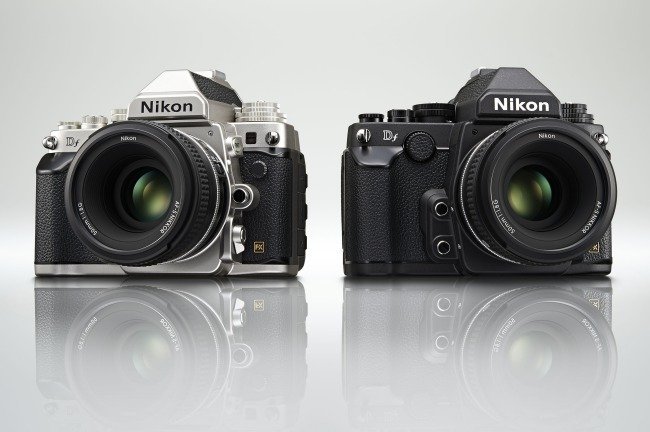
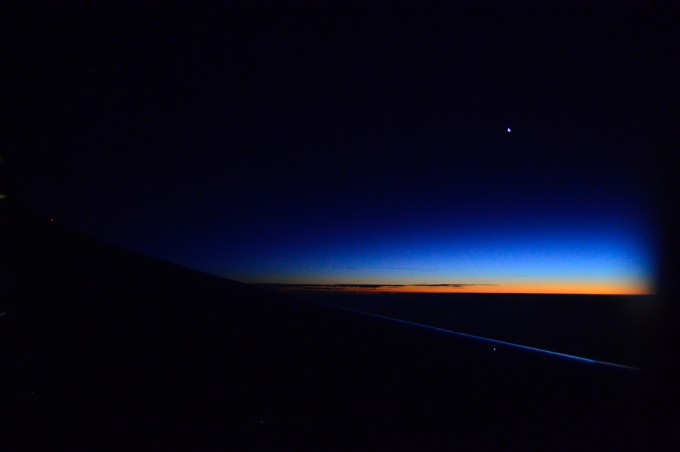
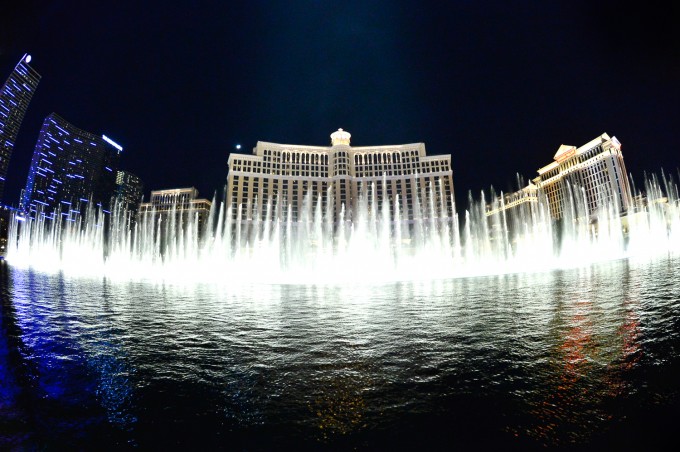
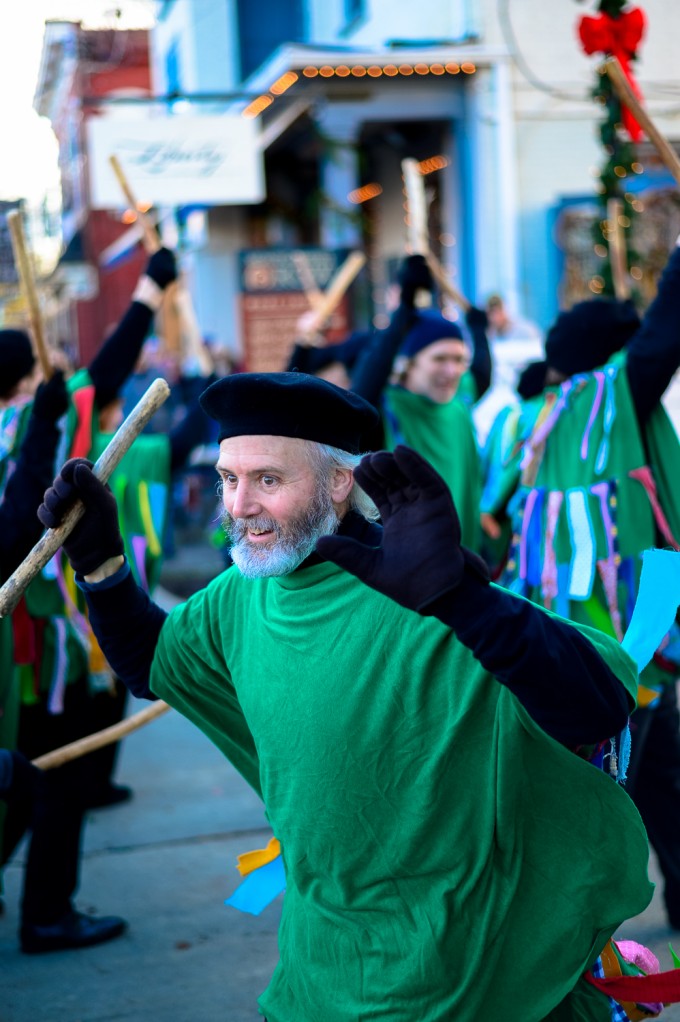


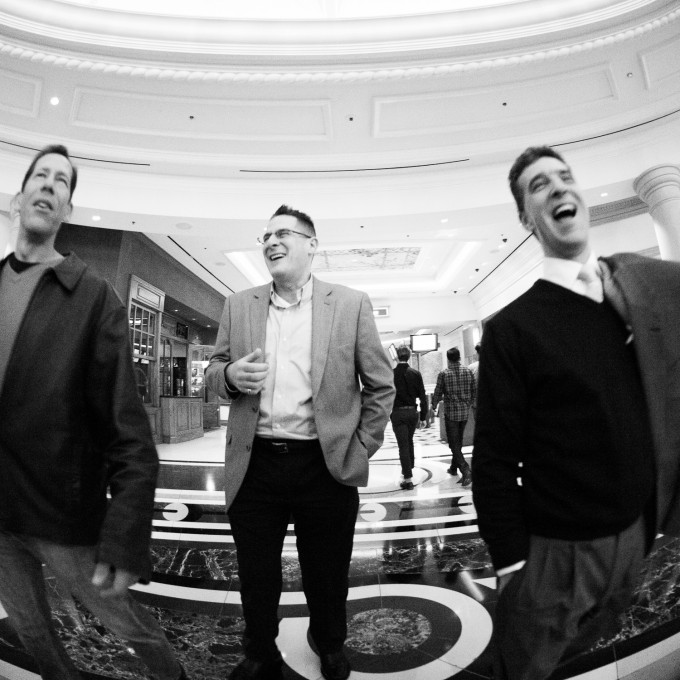
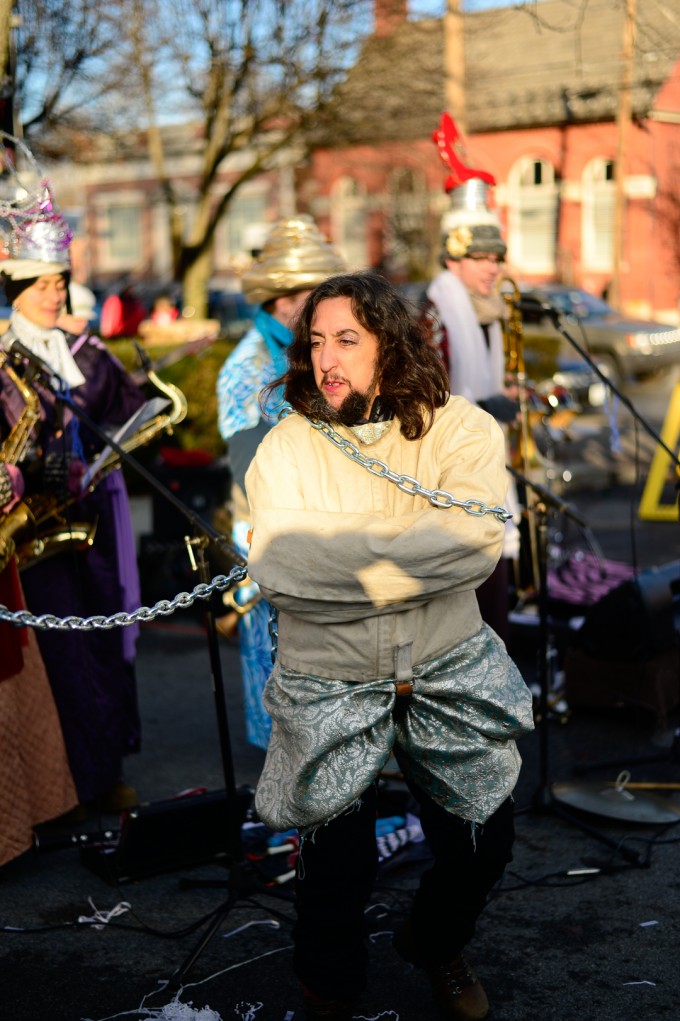
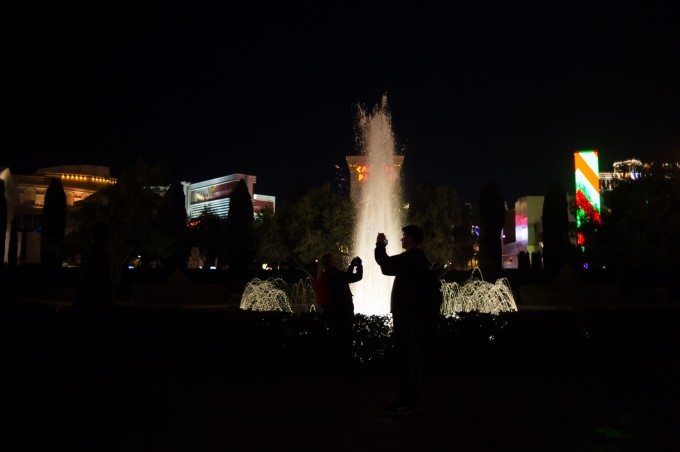
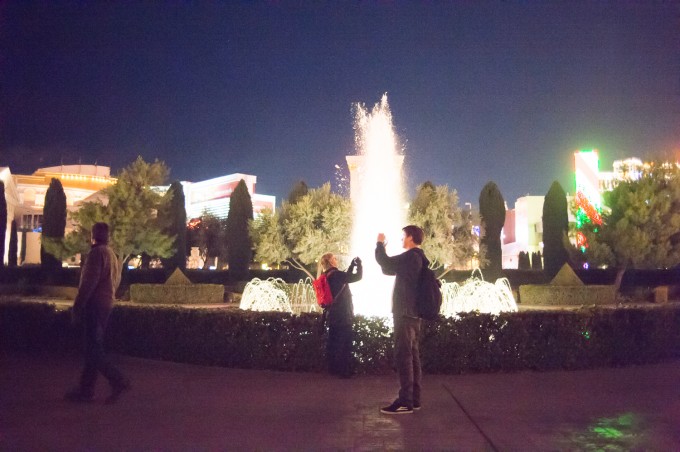


Thanks to Steve for posting the review and to everyone who taken the interest to read it and and took the time to comment.
However, I feel like I need to make a few points:
The sharpness is obviously depending on technique, post processing and the lens. So blame the shooter, but the Df is perfectly capable of shape images. (I think as all non-P&S cameras are today). The 50 f1.8 and 28 f2 are sharp, that has been shown elsewhere. The Fisheye is OK.
I took the time to write and share the review, you can take the time to diss the images, hey’ it’s the internet. I do not really care, other that it never ceasedsto amaze me that you would be motivated enough (by whatever) to write such comments. I am certainly not the worlds greatest photographer, but felt it may be helpful to others to share my impression of using the Df. Part of the intention to share these shots, which were taken shortly after I received the camera, was to show off the dynamic range and low light capabilities, (somewhat hampered by the fact that some of them had to be processed in cameras as a RAW converted was not available yet). I seriously doubt that a D3200 and D5200 would be capable of the the same ISO performance.
I would love to get a DF as back up lens to a D800. I can also see myself using the DF as a daily shooter. But the price is too high. But i a year or 2 I just might look at a refurbished unit. for around $1800
“who doesn’t mind publishing random shots that may not be the best in the world but show what the camera is capable of”
I’m sorry, but what? Taking shots in broad daylight of not-so-fast moving subjects is something any digital camera released in the past ten years can do. When you have the power and potential of Nikon’s D4 sensor and the newest ExSpeed and you bring back candid, boring, and lackluster shots you may have been better of shooting with the D3200 and kit lens.
In fact, these shots do remind me of what I would find a teenager running around with her D3200 and 18-55 would take snaps of. Technical skill lacking, with more money than brains.
Which is exactly who this camera is marketed at.
Dylan, not sure what your point is? That these were not gallery quality shots of fast fast moving jet airplanes at night? This is a USEr review, the camera was taken out and used, and that is what is described. The photos are a mere illustration. Sorry that you do not approve. If someone wants to take pictures of their cat with the Df rather than a D3200, it reflects less on their “brains” than going out and writing insulting comments on websites….
I really wanted this camera to work out for me. My first Nikon was a Nikkormat, brand new. But the Df is too much money for this old soul to waste. It needs the following, 1. A power grip, some kind of grip. 2. It needs interchangeable focusing screens…Oh to have a Nikon “P” again. 3. The AF has to be improved, not to level of D4, but better then what has now. Sorry for nearly 3K, it needs to be more than just “Retro”. If it had 18MP to 20MP with the same relative low specs and the rest of 1-3. I would sell my Fuji and Lecia stuff and shoot with it and film Nikon camera.
I will wait for the Dfs or the Df2.Or just keep what I have.
Great report, like a well balanced hands on summary from a photographer who doesn’t mind publishing random shots that may not be the best in the world but show what the camera is capable of. Wish it was more like my old FM2 !
It is good to get a user report on one of the recently released new cameras. If the Df had the D4’s autofocus, it would be tempting.
Good write-up, it is clear that you like and enjoy the camera, which is great! However, the images really aren’t anything special and unfortunately do not show what the D4’s sensor is capable off. A lot of the shots are boring both visually and technically, and put them side by side with a D5200 and 50mm 1.8 will be indistinguishable.
The images are looking so sooft, no crispy sharpness, thats a pitty.
Agree with you, Khan. How someone above can say these shots “show tremendous image quality” is beyond me. Tremendous? How so?
The idea of the Df is great, but its execution produced an overly large camera. Far too big and chunky. IQ is paramount but there’s no need for a brick to achieve that.
(I’d hazard a guess the D3300 is going to be somewhat more popular among prosumers than thought simply because of its very small size (and with 24Mp and no AA filter).
I don’t see any softness, to the contrary. If I am not mistaken the camera is the smallest and lightest full-frame DSLR Nikon ever produced. Sony’s A7 is probably somewhat smaller, but if it makes much of a difference?
The D4 sensor is well-known to be top notch – in my eyes, the files produced look rich and deep, with excellent detail – as far as one can judge that from web images. It’s a special tool, much what many have been asking for. People tend to either hate it or love it. Personally I wouldn’t mind owning one, although the price is somewhat steep – but then again, it’s a fantastic sensor for half the price of a D4…
Ok, I’ll bite. What other full frame DSLR’s are smaller?
For me the Df is a great size. I like that it’s taller but not as wide as an F3. It’s also really light. The size hang up is getting ridiculous.
Above images are very sharp and have amazing colours. To say anything else is only a very bleak attempt at trolling (bet you were one of the guys shouting about blur in the wedding thread when all it was because the pictures for that article were too small and compressed).
I would argue only the Fuji cameras can match the lovely colours that the Df produces out of camera. The D4 and Df sensor is possibly the best 35mm digital sensor there is.
Look at the full res image James. They’re sharp allright. Tremendously sharp.
Thanks James for sharing the same “eye-illness” with me. Maybe tremedously sharp I need new glasses. No there is absolut nothing tremendously sharp. Its not a Df thing, its the lense and this “uuuuuh, i shoot everything wide open on fullframe paradigm”, you can do this perhaps with zeiss an leica lenses they have still harsh sharpness in focus area.
Sorry Dudes, there is no Sharpness, there is boring softness. I believe shooting wide opened lenses on fullframe generates this too much softness. I feel the same on my D600, it got better with the 28mm 1.8G stopped down to min. 5,6, still a hell of shallow dof.
Anyhow – my Fuji X does it better, DOF is better balanced imho(!). I own X and D600 and find it hard to find a reason to use the D600, shooting fullframe needs some experience. and i see more and more images here that express someone who owns this new fullframe machine with fast lense believing this is an interesting style of imaging with fully opened aperture. Its not, this post is again the proof. Nothing to do with bashing Df.
Cheers,
Khan
My sincere apologies. Benjamin, of course.
Thanks for the report Daniel! The images are lovely and show tremendous image quality.
As a D800 (D700 and D200 before that) user (and four “classic” Nikon slr’s) I was/am very interested in the Df. Having handled it some four times in shops, I like it but wasn’t convinced. Yes, I’d like that D4 sensor, but I’ve also come to appreciate the benefits of modern ergonomics. The D800 feels very intuitive to me.
I’ll stick with what I have I guess… 😉
I have an 800 and a Df. I agree with this comment about the D800 to be more intuitive than the Df in terms of all forms of photography with which one can be engaged in on a sort of professional level set of requirements. This camera appears to be meant not to compete with the 800 Series cameras nor the D750 for example. It is a special tool. Nikon put some of the flair, goals and ideals of the FM3A into this camera. Reading Nikon’s own history of the FM3A would be a primer for understanding what I mean about this. Having owned a Nikon F and a Nikon FE and then a Nikon FM3A, I can see what Nikon was doing here and I love the result. Like all my Nikons, it will likely take a long time to learn to use it to its full capacity or capabilities. All the other statement by Nikon and all the others putting information out there leave out one more thing. The Df is all of those things and is also a great toy. An expensive toy, but a great one. It is also a serious collector’s item. Just watch.
Nice review. Very balanced point of view. I’m likely selling most of my Nikon gear to move over to OMD-M1, but considered getting the Df. I just think it’s way too much money for what I’d get out of it, and given its ergonomic compromises that seem to favor form over function. But I appreciate what it is and it’s good to hear such a well-considered review. Thank you.
Thanks for sharing your experience. I tend to agree that with slow sales Nikon won’t take the chance on a Df2 but they really should, and this time make it simple and pure, like a true FM2 digital.